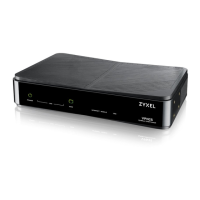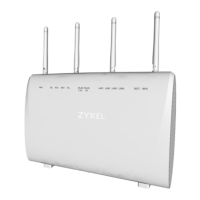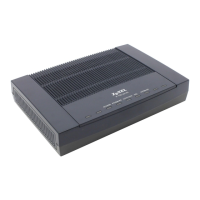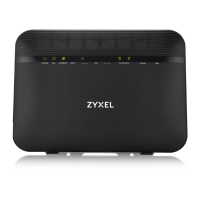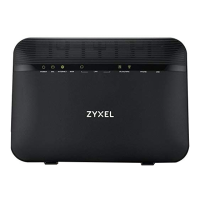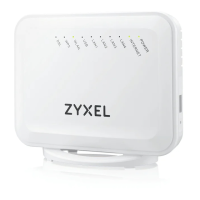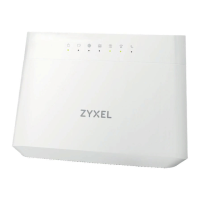Chapter 10 VLAN
VES1724-56 User’s Guide
135
10.5.4 Configure a VLAN Profile
Click the VLAN Profile link at the top-right corner of the Static VLAN screen to open the screen
shown below. Use this screen to view, add, modify and delete VLAN profiles.
Figure 75 VLAN > Static VLAN > VLAN Profile
* Settings in this row apply to all ports.
Use this row only if you want to make some settings the same for all ports. Use this row first
to set the common settings and then make adjustments on a port-by-port basis.
Note: Changes in this row are copied to all the ports as soon as you make them.
Control Select Normal for the port to dynamically join this VLAN group using GVRP. This is the
default selection.
Select Fixed for the port to be a permanent member of this VLAN group.
Select Forbidden if you want to prohibit the port from joining this VLAN group.
Tagging Select Tx Tagging if you want the port to tag all outgoing frames transmitted with this
VLAN Group ID.
Add Click Add to save your changes to the Switch’s run-time memory. The Switch loses these
changes if it is turned off or loses power, so use the Save link on the top navigation panel to
save your changes to the non-volatile memory when you are done configuring.
Cancel Click Cancel to change the fields back to their last saved values.
Clear Click Clear to start configuring the screen again.
VID This field displays the ID number of the VLAN group. Click the number to edit the VLAN
settings.
Active This field indicates whether the VLAN settings are enabled (Yes) or disabled (No).
Name This field displays the descriptive name for this VLAN group.
VLAN Profile This field displays the name of the VLAN profile applied to this VLAN.
Delete Click Delete to remove the selected entry from the summary table.
Cancel Click Cancel to clear the Delete check boxes.
Table 50 Advanced Application > VLAN > Static VLAN (continued)
LABEL DESCRIPTION
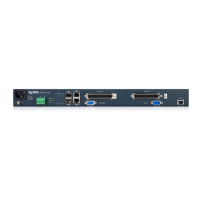
